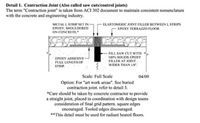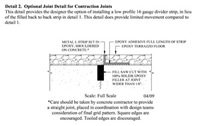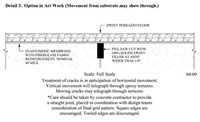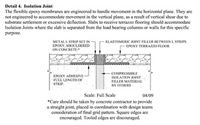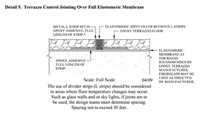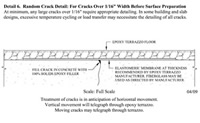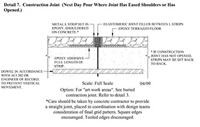Thin-set epoxy terrazzo has many years of successful history dating back to the introduction of epoxies over 40 years ago. Thin-set epoxy was traditionally placed directly onto a prepared structural concrete slab. The crack resistance of the terrazzo was based primarily on two functions. First, the epoxy terrazzo formulations were
extremely high in tensile strength and second, they did not contain excess water that leads to shrinkage cracks or volume change during the curing process.
In the 1990s, the major epoxy formulators introduced flexible epoxy membranes that are installed at a nominal 40 mils. Thickness and engineered for high tensile strength and high elongation, relative to the epoxy binder matrix. These membranes have become industry standard for crack detailing and, in some cases, full slab coverage prior to the installation of the thin-set epoxy terrazzo. The combinations of high tensile low shrinkage binder resins with the high performance flexible epoxy membranes allow architects to specify and detail thin-set terrazzo with confidence.
Concrete has been the standard flooring substrate in the commercial construction industry for many years. The concrete industry has developed many industry guidelines and recommendations to minimize cracking.
While there have been many improvements in mix designs, placement techniques and industry standards, the concrete industry has not perfected the placement of slabs without cracks.
Cracks in concrete are a result of any number of issues, including volume change during the curing process, load deflection, settlement cracks and cracks induced from thermal stresses, which are typically due to non-climate controlled environments during the construction process. While shrinkage cracks, which account for most concrete
cracking, become static once the volume change from curing is complete, any crack has the potential to become a dynamic, moving crack under thermal and load movement stresses. To accommodate dynamic loading, slabs should be designed for maximum deflection of L/360.












